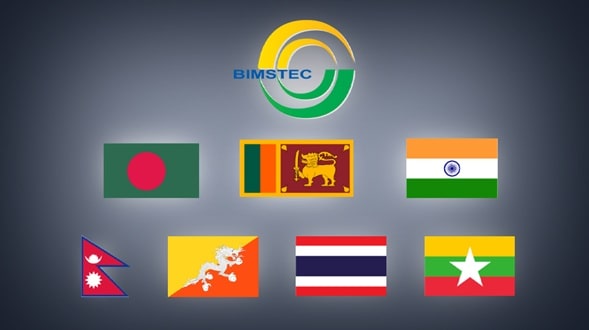India recently led the Bay of Bengal Initiative for Multi-Sectoral Technical and Economic Cooperation (BIMSTEC) security chiefs meeting in Myanmar, emphasizing its commitment to enhancing regional security collaboration. This meeting underscores India’s leadership role within BIMSTEC, particularly in the security domain, which includes counter-terrorism, transnational crime, and disaster management.
The Role and Evolution of BIMSTEC
BIMSTEC, established in 1997, comprises Bangladesh, Bhutan, India, Myanmar, Nepal, Sri Lanka, and Thailand. Over the years, it has grown in importance as a platform for regional cooperation, especially as the South Asian Association for Regional Cooperation (SAARC) has become less effective due to geopolitical tensions, particularly involving Pakistan. BIMSTEC aims to bridge South Asia with Southeast Asia, enhancing collaboration across a broad range of sectors from agriculture to technology and security.

India’s Strategic Interests in BIMSTEC
India’s leadership in BIMSTEC aligns with its “Neighbourhood First” and “Act East” policies, aiming to foster stronger ties with its eastern neighbors and counter China’s growing influence in the region through initiatives like the Belt and Road. The BIMSTEC framework allows India to pursue its strategic, economic, and civilizational interests in the Bay of Bengal region, positioning itself as a central player in regional security dynamics.
Key Outcomes of the Meeting
At the recent meeting in Myanmar, several key areas of cooperation were highlighted:
- Counter-Terrorism: Strengthening mechanisms to combat terrorism and transnational crime remains a priority. India has been particularly proactive in pushing for robust counter-terrorism strategies within BIMSTEC.
- Disaster Management: Enhancing regional disaster response and management capabilities was another critical focus. The region’s vulnerability to natural disasters necessitates coordinated efforts to mitigate risks and improve resilience.
- Technological Cooperation: Emphasis was also placed on leveraging technology for sustainable development. Member states agreed on the importance of affordable technology transfer and cooperation in human resources development to address technological disruptions.
Strategic Implications for India
India’s active engagement and leadership in BIMSTEC serve multiple strategic purposes. Firstly, it consolidates India’s influence in the region by fostering closer ties with its neighbors. Secondly, it provides a platform to address regional security concerns collaboratively, reducing dependence on broader, less effective regional bodies like SAARC. Finally, it helps India counterbalance China’s influence, ensuring that regional cooperation aligns more closely with its strategic interests.
Future Prospects
Looking ahead, BIMSTEC is poised to play an increasingly significant role in regional geopolitics. With plans to adopt a vision document at the upcoming summit and the establishment of an Eminent Persons Group to guide the bloc’s future direction, BIMSTEC is set to enhance its institutional capacity and effectiveness. India’s continued leadership will be crucial in driving these initiatives and ensuring that BIMSTEC remains a robust platform for regional cooperation and security.
In summary, India’s leadership at the BIMSTEC security chiefs meeting in Myanmar highlights its strategic commitment to regional security and cooperation. By strengthening ties within BIMSTEC, India aims to foster a more secure and prosperous Bay of Bengal region, countering external influences and addressing common challenges collaboratively.

